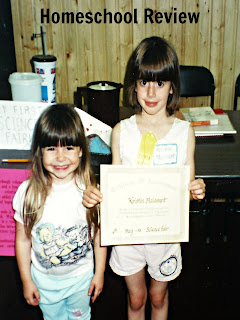 In the Spring of 1997, my oldest student was finishing 6th Grade at home and my 2nd was finishing 3rd Grade. (Sixth Grade was the year of our 4-H Llama Project.)
In the Spring of 1997, my oldest student was finishing 6th Grade at home and my 2nd was finishing 3rd Grade. (Sixth Grade was the year of our 4-H Llama Project.)
A friend at church, who had six kids, was talking about a high school co-op she was putting together so that her daughter could build some deeper friendships.
My daughter was young, but she was as smart as a whip and wanted to participate. My friend, Marcia, said that she could be part of the co-op as long as she kept up with the high school level assignments. We formed a co-op for the grammar aged students as well.
At this time, Tapestry of Grace (TOG) had not been written yet. My friend wrote it week by week and handed it to us in the lobby at church on Sunday morning. At that time it was called "HIStory" (as in HIS story). We would acquire library books for the topic of the week and I would read them aloud to the two girls at home. My oldest would complete certain additional assignments to prepare for class. (If she did not do her homework she was not permitted to participate. How's that for a flip! They did their school work because the WANTED to be allowed to participate in co-op!)
Once a week each group met to discuss history for one hour, had a brief break, and then they discussed literature for one hour. Composition assignments were turned in and graded. On a second week day the group met to do subject related art projects. We did weaving and soapstone carving, paintings of Egyptian gods and cuneiform. We did so much hands-on stuff!
Year 1 we studied Ancient Israel, Ancient Rome, Ancient Greece and other Ancient Cultures. Year 2 we studied the Dark Ages, the Middle Ages, the Renaissance and Reformation and early American History. Year 3 we studied the 1800's and Year 4 we studied the 1900s. Each unit we completed was culminated with a "Period" celebration where we all dressed up to mimic the era we had been studying.
Daughter #1 completed her four-year cycle of Tapestry at the high school level, and then daughter #2 did her four-year cycle of Tapestry. I took turns teaching the Koran, Huckleberry Finn (or was it Tom Sawyer?) and various other works of literature. I also taught lots of art, but we eventually determined we needed two hours Wednesdays for history and two hours Fridays for Literature and Composition.
Once each year the co-op group went on a big trip. I remember trips to Philadelphia (Valley Forge), Plymouth, Harper's Ferry, New York, Williamsburg... and even Europe! My 2nd daughter went to Italy, Rome, Greece! It should be a wonderful memory, but for me not so much. While she was gone my dad died suddenly. That is MY memory of her trip to Europe, topped only by my memory of the day she graduated high school, which is the day my mom died. (That poor child! No graduation party here... no celebration... ::sigh::)
Tapestry of Grace was a lot of work, but a wonderful program. It well prepared my daughters for acceptance into college. They also thrived in the co-op setting. Their desire to be there encouraged them to work hard each week to present themselves at class with their assignments completed.
In the earlier years of our Tapestry studies, I read our assignments out loud while both girls listened and colored. As we studied Egypt, my girls worked on pictures of flora and fauna (plants and animals) of Egypt. This poor under-educated mama had to learn that Egypt is part of Africa, where hippos and lions live! I had to learn the difference between alligators and crocodiles (crocodiles live in the Nile!).
As the studies became more intense, though, I could not keep up. Reading out loud is much slower than reading to yourself. I had to start getting two levels of books so the girls could read their assignments themselves, each at their own level. We often still read certain assignments together -- anything Science related, like Science in Ancient Egypt. When a baby arrived, though, the girls really needed to stay on task on their own -- Mama was busy!
Tapestry was never a good fit for child #3. He didn't want to be in a co-op, so there was no motive to get the assignments done. We attempted Tapestry on our own several times, but a different curriculum seemed a better fit and we always went back to it. But the girls and I will always remember our Tapestry Co-op days fondly, and I'll always be thankful to my friend, Marcia Somerville, for letting us be included in the first co-op!


























